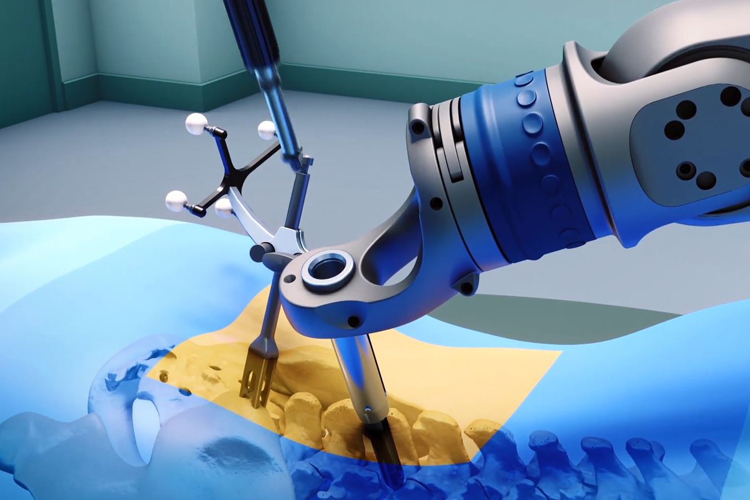Carondelet St. Joseph’s Hospital is the first in Tucson to acquire new GPS-guided surgical robot technology to aid surgeons performing complex spine surgery and spinal fusion procedures. The robot-assisted platform is designed to aid surgeons through computer-guided navigation.
The system acts like a car’s GPS navigation system by following an individualized map of a patient’s anatomy after body images are imported into the computerized robot. This guides the robotic arm to specific areas of the spine. Surgeons use the recorded pathway for accuracy in size and placement of screws and implants during spine surgery.
“Robotic guidance is an assistant for the surgeon. The robotic arm aligns tools along a planned pathway to place screw implants to stabilize the spine. Navigation is a way for the surgeon to see the tools in relation to a patient’s body on a screen as the tools are being used,” explained Carondelet Neurological Institute surgeon Matthew Wilson, M.D.
“Much like a GPS in your car, the surgeon plans the route to place screw implants in the spine and robotic system helps align that pathway to accurately place the screws. The surgical tools and implant are visible on the GPS screen throughout the entire procedure,” he said.
Minimally invasive surgery combines a surgeon’s understanding of anatomy with x-ray imaging to treat spine conditions using small incisions. The technique permits the surgeon to separate the muscles surrounding the spine rather than cut through them, operating through small incisions along the spine.
The system is approved for pedicle screw placement in the cervical, thoracic, and lumbar spine. The following procedures are treatment options that may include pedicle screw placement:
• Posterior Fusion
• Anterior Lumbar Interbody Fusion
• Lateral Lumbar Interbody Fusion
• Transforaminal Lumbar Interbody Fusion
• Posterior Lumbar Interbody Fusion
On the day of surgery medical images are taken and imported into the GPS system. The surgeon uses these images to determine the size and placement of implants and creates a plan based on the patient’s anatomy. This is used to guide the rigid robotic arm to a specific region of your spine, similar to a planned route or pathway on a GPS. The surgeon uses this pathway or route to accurately place the implants using instruments.
Throughout the procedure, the surgical instruments and implants are continuously displayed on the screen for the surgeon and staff to monitor. This display allows the surgeon to view live feedback during the procedure for more precise implant placement.




